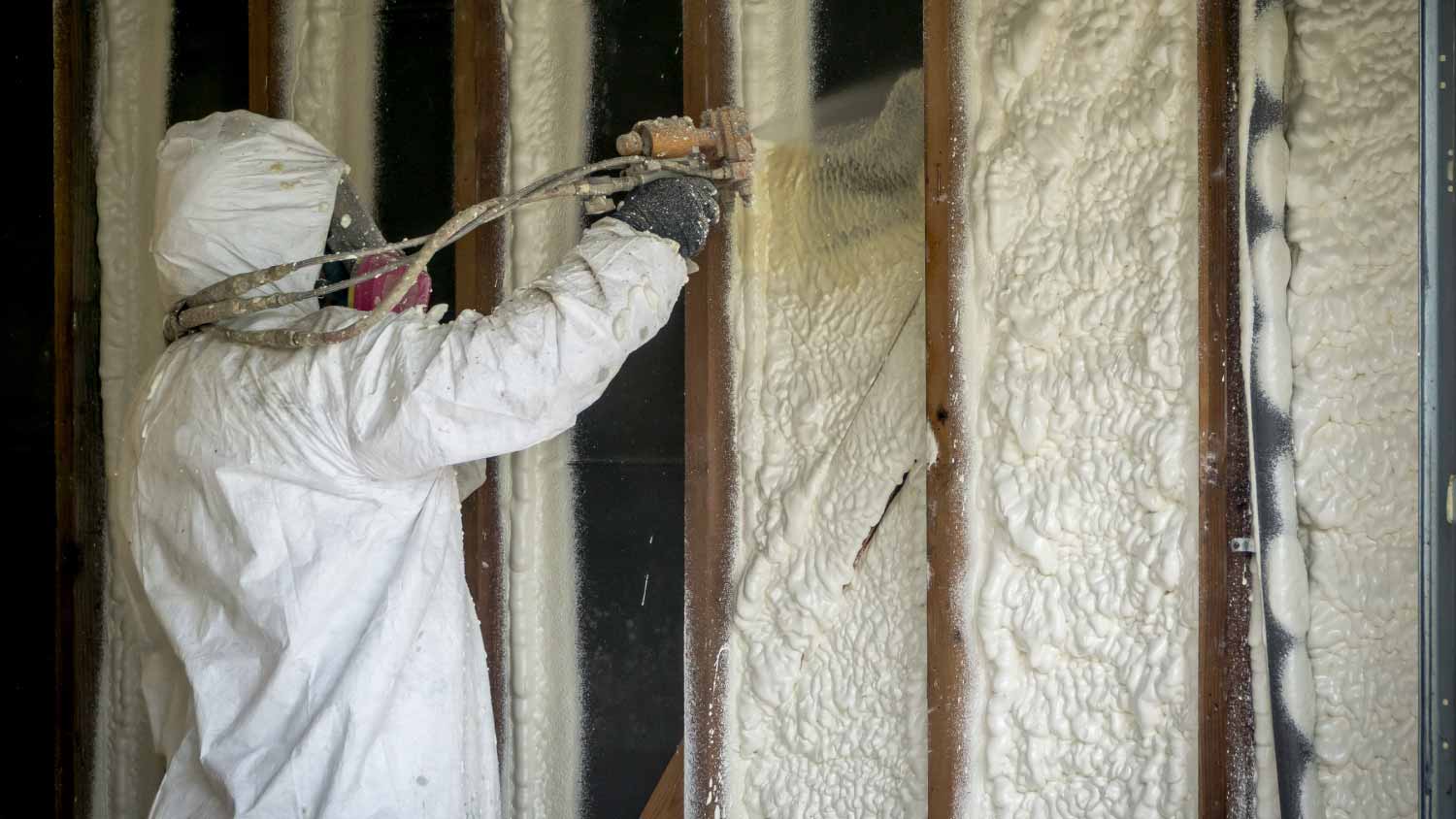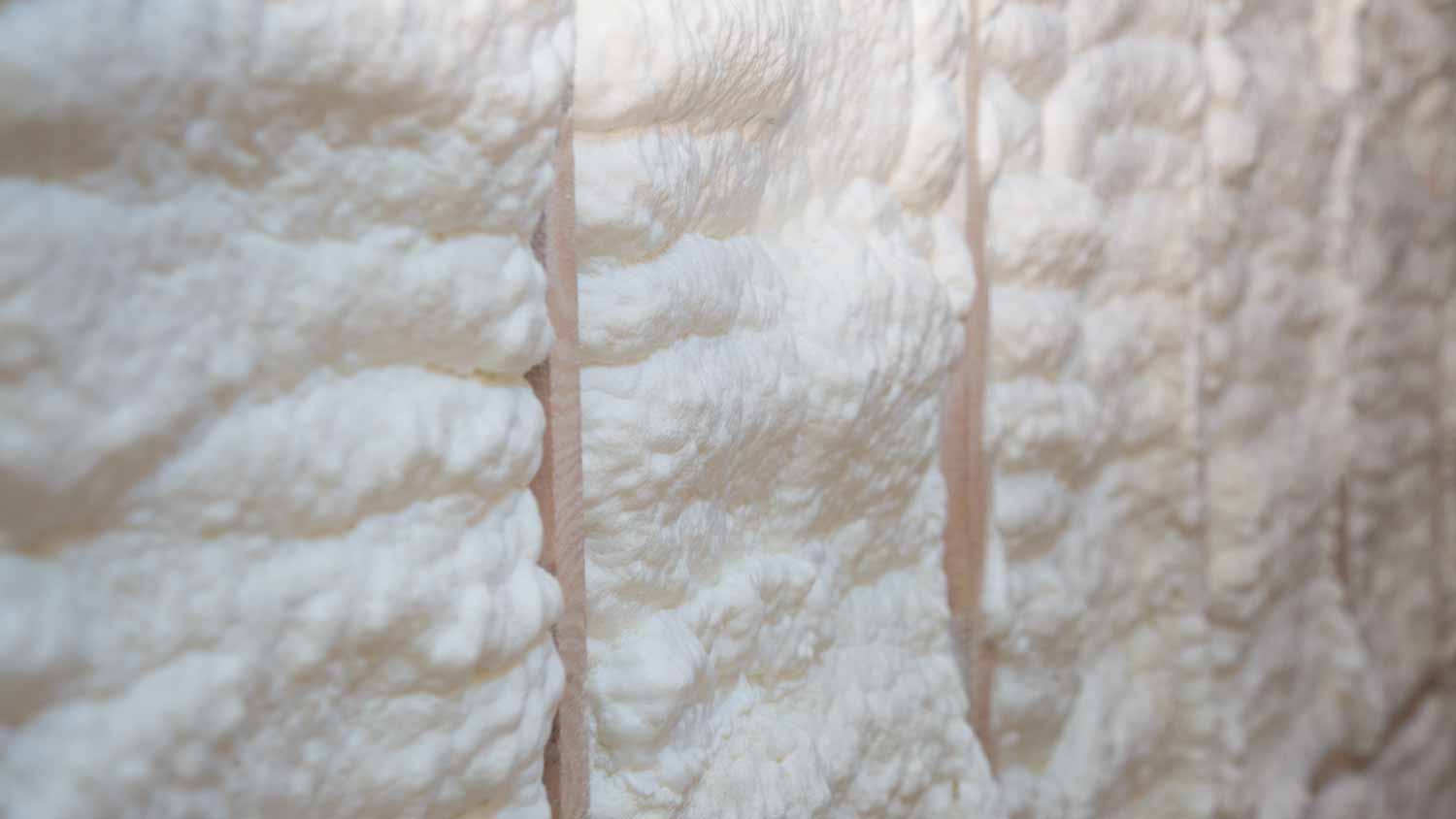
Insulating your attic can massively improve your home’s efficiency and reduce electric bills. Use this guide to find out what attic insulation will cost you.
Flexibility meets rigidity


Open-cell foam and closed-cell foam are both energy-efficient spray foam insulation options.
Closed-cell foam boasts strong durability and a life span of up to 50 years.
The most inexpensive option between the two is open-cell foam.
Choosing the right type of insulation can significantly impact your home's comfort, energy efficiency, and long-term costs. Two popular options to compare are open-cell foam versus closed-cell foam insulation. Each boasts its own benefits depending on your home's needs. Learn about each type to make the best purchasing decision.

Open-cell and closed-cell foam are two popular types of spray foam insulation that increase energy efficiency. While both serve similar goals, their properties vary. Evaluating their major difference can help you choose the best option for your local installation pro to install.
| Type of Difference | Open-Cell Foam | Closed-Cell Foam |
|---|---|---|
| Density | Low (0.4 to 1.2 lbs/ft³) | High (1.75 – 2.25 lb/ft³) |
| R-Value | Lower at 3.5 per inch | Higher at 6 per inch |
| Moisture Resistance | Absorbs moisture | High moisture resistance |
| Cost | Affordable | Expensive |
| Application | Interior | Exterior |
The main difference between open-cell and closed-cell foam insulation is how the cells are formulated. In open-cell foam, the cells aren't fully encapsulated, so air fills the gaps to give it a soft and spongy texture. This structure makes the foam lightweight with a density between 0.4 to 1.2 lbs/ft³. Because it's lightweight, the material is flexible and can expand to fill irregular spaces, which is perfect for interior use.
Closed-cell foam has fully closed and tightly packed cells, creating a rigid and dense structure. The cells are filled with gas, allowing the foam to expand and give it a firm quality. Closed-cell foam has a high density, ranging between 1.75 and 2.25 lb/ft³. The density and solid structure makes the material more durable.

To measure insulation's thermal resistance, the R-value indicates how well it insulates by resisting heat flow. The higher the R-value, the better the insulation to effectively reduce energy loss. Open-cell foam has a low R-value of around 3.5 per inch while closed-cell foam boasts a higher R-value of around 6 per inch.
Despite having a lower R-value, open-cell foam can provide effective insulation but may be more challenging in extreme climates. Additionally, due to its porous structure, it's more likely to absorb moisture, which doesn't benefit areas with high humidity or water exposure.
The dense structure of closed-cell foam provides a strong vapor barrier to prevent moisture absorption. The material is ideal for spaces prone to increased moisture, such as basements, roofs, and exterior walls. When compared to open-cell foam, closed-cell boasts better resistance to both heat and moisture.
Open-cell foam boasts a solid air seal by expanding and filling gaps. However, it's not as strong as closed-cell foam. Its softer, less dense structure allows it to conform to abnormal spaces to effectively reduce air leakage in interior walls and ceilings. Closed-cell foam creates a much tighter (and more durable) air seal, which is best for exterior use.
Open-cell foam's soft and porous structure effectively absorbs sound waves, which is great for soundproofing. Unfortunately, closed-cell foam isn't the best soundproofing option due to its dense and rigid structure. Instead, sound waves bounce off its solid structure.

The best application option for open-cell foam is interior spaces where moisture control isn't an issue such as walls, ceilings, or attics. The lightweight material is a more cost-effective option for improving air sealing in dry climates. Closed-cell foam thrives as insulation for exterior walls, roofs, basements, or other moisture-prone areas. The dense and rigid structure is best for areas with high humidity or where water resistance is a concern.
Open-cell foam is more affordable thanks to its lower density and simpler production. Less material is used to allow for larger coverage areas. On average, this type of spray foam installation cost ranges between $0.60 and $1.60 per board foot. Closed-cell foam is more expensive due to its higher density and because it requires more materials. The cost per board of closed-cell foam averages between $1.30 and $3.10.
From average costs to expert advice, get all the answers you need to get your job done.

Insulating your attic can massively improve your home’s efficiency and reduce electric bills. Use this guide to find out what attic insulation will cost you.

New insulation can make your home more comfortable and boost energy efficiency. Use this insulation cost guide to get an accurate estimate for the installation.

Wool insulation offers a higher R-value than fiberglass but is more expensive. Use this guide to estimate wool insulation costs for your home.

Wondering how much insulation to buy? Use our calculator to determine how much insulation you need based on your home's square footage and R-value needs.

Learning how to insulate plaster walls can help improve your home's energy efficiency. However, there are crucial cautions to consider before attempting.

EPS versus XPS insulation—if you're going the foam board insulation route, which one is right for you? Learn the difference and how to choose.